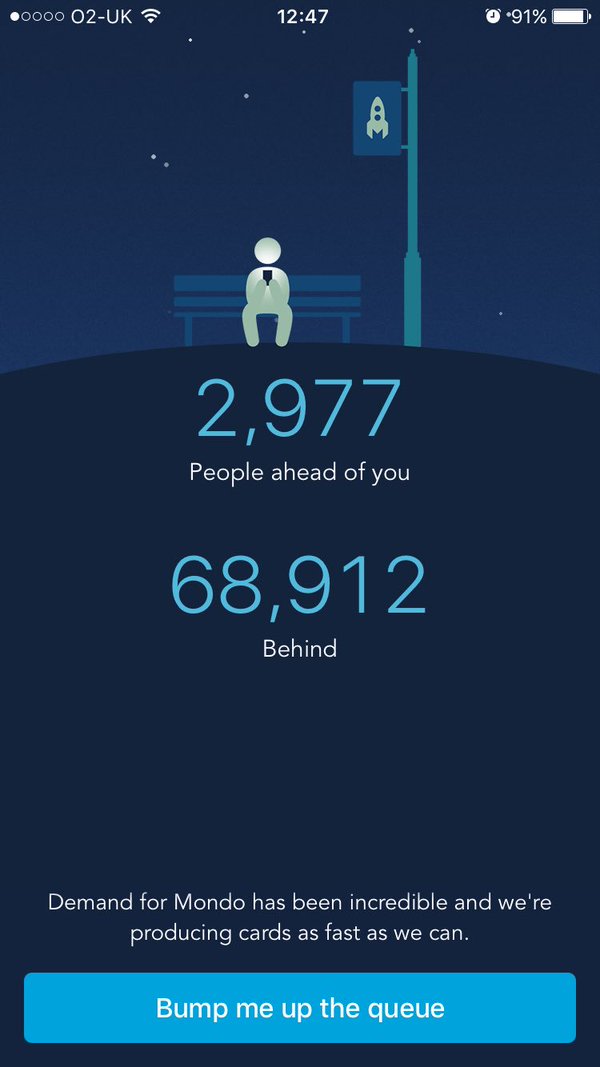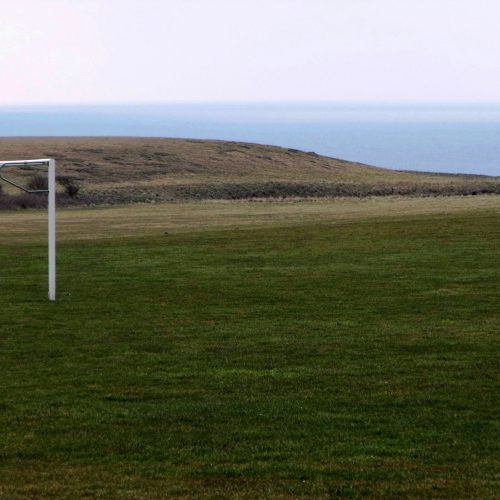Monzo (formerly known as Mondo) is a new startup bringing a mobile-first approach to banking.
We caught up with Monzo’s former Head of Marketing, Bailey Kursar, to find out how Monzo made referral marketing work for them, and how they took the startup world by storm…
The future of banking?

“At Mondo we’re building a mobile experience for banking that you could compare to the way Whatsapp, Spotify or Uber feel to use” says Bailey. “If you open up an app from a traditional bank, you don’t know exactly what you’ve been spending. You’re still waiting 3 days later to see those transactions appear in your account.”
So what makes Monzo different? “With Monzo, you get immediate notifications whenever you spend, so your balance is always up-to-date” says Bailey, who feels like the friendly appearance of emojis in the app alongside real time updates on your payments, can make you feel that bit more confident in your spending.
“Using the app, you’re just that bit more aware that you’re spending. In my case, it’s way too much on coffee, and whenever I see a coffee cup emoji via a push notification it’s a gentle nudge that maybe I should cut down”.
An air of exclusivity
Monzo created an air of exclusivity using cleverly interactive waiting lists, offering earlier access to those who referred their friends. Before the app was ready, Monzo had people signing up from all over the world. The more people you referred, the higher you moved up the list.
When Monzo co-founder Tom Blomfield first began looking into starting a new bank in February 2015, research suggested it would take around 2 years to become regulated.
“The consensus was that we really needed to get building the product before that” says Bailey, and so the Monzo team put together a pre-paid debit card programme that they rolled out in November for beta testing.
Utilising an existing network
Monzo CEO Tom Blomfield has a background in a number of tech startups. Most notably, he co-founded GoCardless alongside Matt Robinson and Hiroki Takeuchi in 2010.
“The tech scene is a little bubble, everyone knows everyone else”
With a strong existing network between them, Tom and the rest of the team were well placed to start getting the word out with influencers in the startup and tech scenes says Bailey. “Giving out [pre-paid debit] cards to quite a small community of quite techy, passionate people, combined with the strength of the product, even in those early days, was enough to encourage a lot of word of mouth referrals.”
“We hosted a couple of hackathons as a really scrappy way to get the word out about what we were doing”
By reaching out to influencers they already knew, the early Monzo team were able to get the product in the hands of people who would spread the word for them… “It wasn’t a deliberate strategy” says Bailey, “but the tech scene is a little bubble, everyone knows everyone else.”
Another thing they wanted to push early on was Monzo’s APIs. “We really wanted people to try developing their own app that used Monzo data or their ability to push information into Monzo using the API” says Bailey. “We hosted a couple of hackathons as a really scrappy way to get the word out about what we were doing. That was a really powerful way to get tech industry journalists interested. It’s a story that you just wouldn’t hear from any legacy bank.”
It wasn’t long until Monzo has a substantial waiting list “and were struggling to be able to fulfil demand for cards” says Bailey.
In March 2016, Monzo officially launched their beta programme and currently have around 30,000 people using the pre-paid debit cards.
Reward for Referral
Speaking about Monzo’s referral based waiting list, Bailey says “I think a lot of people out there doubt that people would refer their

friends to financial services product. It’s not something that people are generally very desperate to try and add to their lives. [But] I think that at the moment, it’s working for us [because] Monzo is so different to what is out there. It’s an entirely different experience in terms of your banking. Nothing about it is a completely crazy different product, but it’s just a lot, lot simpler, plus it’s real time, the data within your transactions. It makes sense. People aren’t used to that with their bank, and I think [that’s why] people are really scrambling to get a hold of a card.”
“It’s an entirely different experience in terms of your banking”
One of the most intriguing elements of Monzo’s referral system was that customers could see how many people were ahead and behind them in the queue. We asked Bailey to explain a little about how the queuing function worked.
“The number in the queue corresponds to the number of people who have the app” says Bailey, but that number includes people who aren’t yet eligible to get the app, because it’s not live in their area, or because they have an Android device where Monzo is currently only available on iOS. “Hopefully those guys are going to be our evangelists when we do launch on Android and in those countries.”
Feedback from beta testing
While Monzo are currently awaiting their full banking licence, they are handing out pre-paid debit cards to users as a form of beta test.
For each Monzo release, Bailey says the app is “released internally to employees first for proper ‘buggy bug’ fixing for a few days. Then it goes onto TestFlight to a small number of people who use Monzo but who don’t mind if they find a bug. Then, once we’re happy with that, it gets released onto the App Store.”
Monzo makes sure that users have plenty of ways to report bugs should they find anything wrong with the live app. “We’ve got real time chat available from our support team who look at bugs” says Bailey. “We also have a community forum where people can report issues, with 500-600 active users every week. “
Bailey says 10-20 new threads are currently popping up on the forum every day with feedback, feature suggestions and improvements. “That means that very quickly we can identify where there are things that need fixing or improving” says Bailey.
Bailey recalls one user who reported he was getting a $ emoji when he was at a UK ATM withdrawing pounds. “Within 24 hours, one of our back end engineers had fixed the issue. Now, not only do you get a £ emoji at a UK ATM, but you get dollars when you’re in America. It was a really cool quick thing that we could fix.”
How can you be as successful as Monzo?
Bailey describes herself as a full-stack marketer, the kind of person who is “competent in a range of things and that’s useful at a certain stage in a startup”. Bailey says she works best at “putting together lots of different things and then working to bring on people who are experts in different areas when needed.” So we thought, while we had her chatting, we’d ask how other startups might be able to replicate Monzo’s marketing success.
“You can get a lot of clues for the right path or marketing strategy from the very initial success or failure of how people are finding out about and acquiring your product”
“I think the reason that Monzo and similar apps to Monzo have that kind of initial buzz and viral growth is really down to the product rather than the marketing strategy” says Bailey. “The two go hand in hand, of course. When it comes to marketing strategy, there’s no one size fits all.”
For Bailey, early startup marketing is very much about testing a bunch of things and seeing what works.
“You can get a lot of clues for the right path or marketing strategy from the very initial success or failure of how people are finding out about and acquiring your product” says Bailey. “If in the first month or two you see that face to face events for getting users are working really well for you, there are probably ways to scale that, even online.”
Bailey says that Monzo took a similar approach by creating a community forum to scale up the ideas they were getting through face-to-face feedback. “[Now] we’re able to include people from all over the UK and all over the world”.
When people read about the successes of companies like AirBnB and Uber, says Bailey, you always hear that “you just have to try things that might not scale and work out how to scale them if they work. What I’ve learnt at other startups is that whatever marketing channels you think are going to work before you launch, it’s just a hypothesis. You need to treat any strategy for getting users as an experiment.”
Find out more about Monzo at monzo.com.
If you want to discuss your startup or idea, get in touch with Simpleweb today.
If you’d like to discuss your startup or project, get in touch with Simpleweb today.



